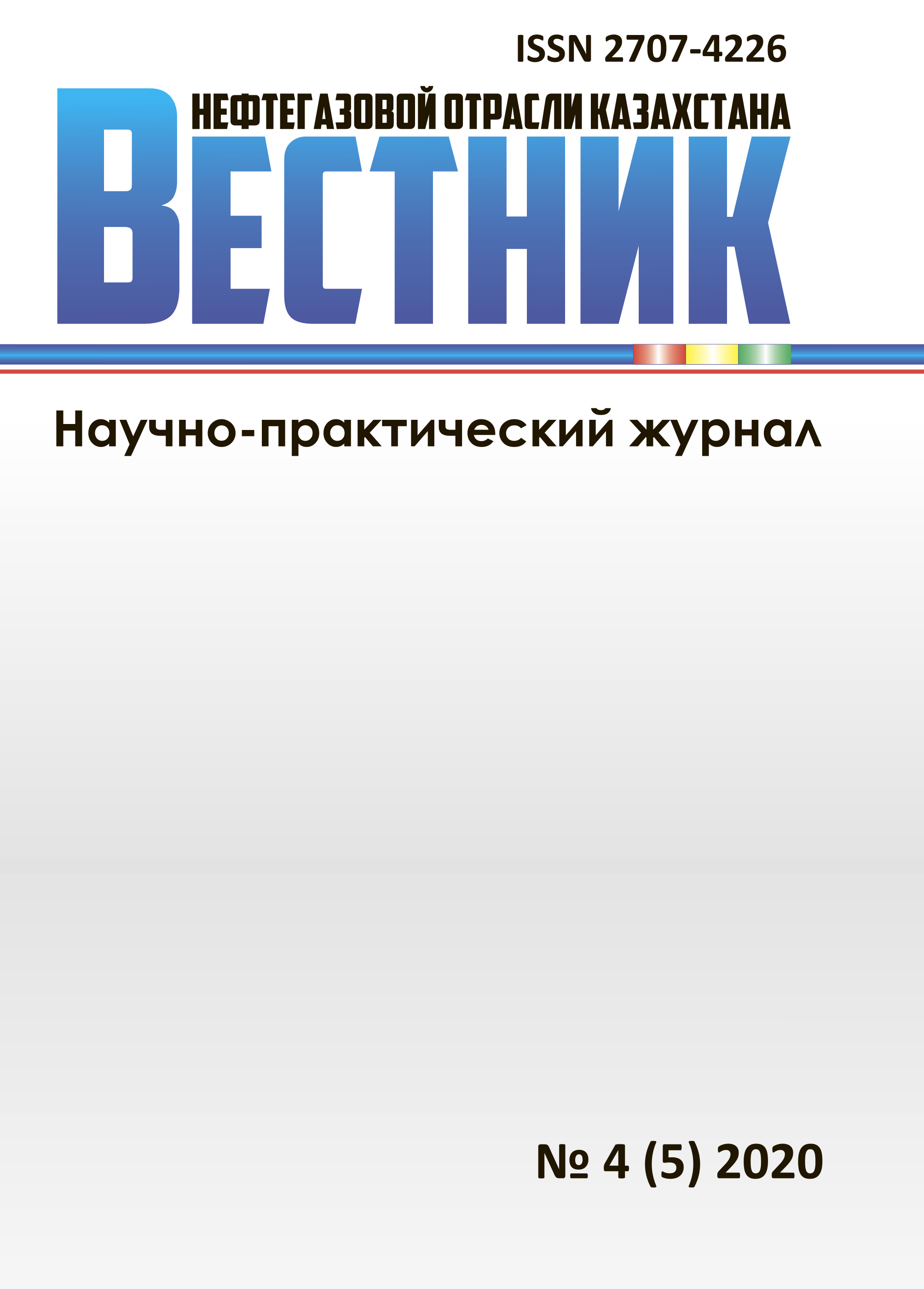Том 2, № 4 (2020)
- Год: 2020
- Статей: 10
- URL: https://vestnik-ngo.kz/2707-4226/issue/view/4360
- DOI: https://doi.org/10.54859/kjogi.202024
Весь выпуск
Статьи
Нефть на больших глубинах: сравнение нефтегазоносных бассейнов и перспективы поиска сверхглубоких залежей (бассейны Сычуань, Тарим, Пермский, Каннинг и Прикаспийский)
Аннотация
В статье рассматриваются сведения о нефтегазоносных бассейнах, где накоплен значительный опыт геологического изучения и освоения так называемых сверхглубоких залежей нефти и газа (глубины более 6000 м), о геологическом строении, открытиях в пределах рассмотренных нефтегазоносных бассейнов, данные о скважинах, пробуренных на большие глубины, включая результаты испытаний, о запасах и свойствах пластовых флюидов.
 3-20
3-20


Особенности структурно-тектонического развития Алакольского региона в связи с перспективами его нефтегазоносности
Аннотация
В данной статье проведен краткий анализ тектонической структуры Алакольской впадины, что позволяет предполагать надвиговое перекрытие современной горной системой нефтегазоматеринских толщ в древней Алакольской впадине, расширяет перспективную территорию для поисков нефти и газа. Тектоническое строение Алакольской впадины охарактеризовано на основании карты по поверхности палеозоя, составленной по сейсмическим данным. В связи со слабой изученностью осадочных комплексов Алакольской впадины о перспективах их нефтегазоносности можно говорить с некоторой долей условности. Высокая интенсивность тектонического режима, повлиявшего на структурно-формационные комплексы, связана с горстами и грабенами, что сказалось на литолого-палеогеографических условиях образования пород.
Следовательно, масштабы нефтегенерационного потенциала их различны и определяются типом и концентрацией органического вещества. Масштаб проникновения моря и существовавшие озерно-болотные условия породообразования, повлиявшие на накопившиеся толщи геологического разреза с гумусовой органикой, свидетельствуют о перспективах их нефтегазоносности.
 21-25
21-25


Роль сейсмической изученности и её влияние на геологию и разработку месторождений
Аннотация
В данной работе представлено краткое исследование роли сейсмической изученности и её влияния на геологическое строение месторождений и естественное обновление запасов углеводородов в пределах Прикаспийского, Устюрт-Бузачинского и Мангышлакского бассейнов. В основу приведенных исследований положена концепция изучения месторождений углеводородов по типу иностранными компаниями, основанная на структурной и динамической интерпретации сейсмического материала, на примере казахстанских месторождений. Характерными показателями концепции являются выделение обстановки осадконакоплений и начала прогнозирования их распространения в областях отсутствия скважинных данных с целью выделения седиментационных тел, наличия зон накопления, а также современных миграционных каналов. Убедительным доказательством важности изучения сейсмического материала при помощи динамической интерпретации месторождений нефти и газа в Прикаспийской впадине являлись выполненные ранее анализы сейсмического материала. Расчеты и доказательства, экспериментальные исследования позволили на основе созданной концептуальной модели строения залежей углеводородов обосновать перспективы нефтегазоносности и целесообразность ведения геологоразведочных работ в пределах этих областей.
 26-35
26-35


Комплексный анализ для оценки нефтегазового потенциала доюрской части месторождения Узень-Карамандыбас
Аннотация
Вопросы о перспективности нефтегазоносности палеозойских отложений Мангышлакского осадочного бассейна до настоящего времени остаются открытыми, несмотря на длительную историю изучения и большие объемы выполненных исследований. В первую очередь это связано с несовершенством применявшихся ранее поисковых и разведочных технологий и достаточностью выявленных запасов открытых месторождений в мезозойской части разреза. При текущей ситуации естественного истощения запасов в мезозойских отложениях есть необходимость постановки поисково-разведочных работ на глубокозалегающие горизонты палеозоя.
В статье приводятся общие сведения об изученности региона, а также на основании доказанных фактов нефтегазоносности отдельных площадей и полученных последних результатов бурения поднимается вопрос о нефтегазовом потенциале доюрских отложений.
 36-41
36-41


Подбор эффективных растворителей для асфальтено-смолопарафиновых отложений месторождения Узень
Аннотация
Асфальтено-смолопарафиновые отложения в подземном оборудовании скважин всегда являлись одной из серьезных проблем в добыче высокопарафинистой нефти на месторождении Узень. Проблема эта и в настоящее время остается крайне актуальной, а мероприятия по борьбе с этими осложнениями – весьма затратными.
Процессы парафиноотложений в скважинах, промысловом оборудовании осложняют добычу нефти и приводят к её потерям, а также авариям и простоям оборудования. По этим причинам возникает необходимость в проведении исследовательских лабораторных работ по подбору эффективных растворителей парафиноотложений и методов их удаления.
 42-50
42-50


Вовлечение в разработку недренируемых запасов нефти на месторождении Жетыбай
Аннотация
В статье представлены результаты детального изучения геологических условий осадконакопления, в ходе которого выявлены значительные, не охваченные существующей системой разработки, остаточные запасы горизонта Ю-10. Описаны исследования локализации остаточных извлекаемых запасов нефти и совершенствования системы разработки 10 горизонта месторождения Жетыбай. Составлена адресная программа геолого-технических мероприятий, направленных на увеличение потенциала добычи нефти, а также представлена эффективность выполненных мероприятий.
 51-62
51-62


Применение коррозионностойких насосно-компрессорных труб на проблемных добывающих скважинах месторождения Узень
Аннотация
На месторождении Узень основными причинами коррозии подземного оборудования являются высокая обводненность нефти и наличие в добываемой продукции кислых газов (Н2S и CO2). Коррозия насосно-компрессорных труб приводит к преждевременной остановке скважин, аварийности и в результате уменьшению добычи нефти. В статье рассмотрена природа коррозионной среды, а также масштабы, причины и условия происхождения сероводородной и углекислотной коррозии. Приведены результаты лабораторных исследований образцов марки стали 25ХМФА после эксплуатации. В настоящее время обосновывается новый подход к решению проблемы коррозии путем проведения опытно-промышленного испытания насосно-компрессорных труб марки стали 25ХМФА, стойкой к коррозии.
 63-69
63-69


Повышение эффективности ремонтно-изоляционных работ для ограничения водопритока из пластов с использованием новых технологий на месторождении Каламкас
Аннотация
В работе представлен анализ всех ремонтно-изоляционных работ, проводимых в течение последних 10 лет на месторождении Каламкас, проведено сравнение использованных реагентов для ограничения водопритока, и на основе анализа даны рекомендации по повышению эффективности ремонтно-изоляционных работ на месторождении Каламкас.
 70-78
70-78


Анализ эффективности горизонтального бурения на месторождениях АО «Эмбамунайгаз»
Аннотация
Одно из направлений увеличения коэффициента нефтеизвлечения, эффективной разработки невовлеченных запасов, а также поддержания текущей добычи – это бурение горизонтальных скважин. Были рассмотрены и проанализированы все месторождения АО «Эмбамунайгаз», по которым существуют постоянно действующие геолого-гидродинамические модели, на которых подобраны и просчитаны местоположения проектных горизонтальных скважин.
В данной работе определены необходимые условия для повышения эффективности горизонтального бурения, проведены оптимизация длины горизонтальной секции, анализ участков заложения, экспертиза секторных гидродинамических моделей, факторный анализ фактических дебитов и анализ текущей работы глубинно-насосного оборудования, проанализированы изменения физико-химических свойств, энергетическое состояние зон горизонтальных скважин.
 79-87
79-87


Будущее водородной энергетики
Аннотация
В статье рассматриваются основы водородной энергетики, развитию которой в последнее время уделяется большое внимание в мире как в связи с ограниченностью природных запасов углеводородов, так и в связи с проблемой увеличения выбросов углекислого газа в атмосферу, обусловленной применением углеродсодержащих топлив.
Рассмотрены как положительные, так и отрицательные стороны водородной энергетики, возможные направления развития. Приведены перспективы использования водородного топлива.
 88-95
88-95












